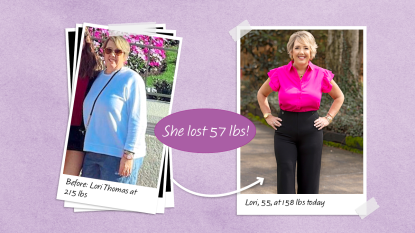Is Your Heart Pounding? Here Are 4 Ways to Quiet Those Flutters

Maybe you’re in the grocery store when you feel it. Or you’re sitting at your computer, drinking coffee. Maybe you’ve just gotten settled in bed when the sensation starts up: that strange fluttering, pounding, or irregular beating in your chest. If you’ve ever experienced heart palpitations – momentarily irregular heartbeats – you know how surprising and uncomfortable they can be.
Thankfully, they’re likely benign, and there are a few simple things you can do to stop them.
Slow down on the coffee.
Metropolitan Cardiovascular Consultants notes that caffeine causes the body to release noradrenaline and norepinephrine, two hormones that raise heart rate and blood pressure. Caffeine may therefore increase the likelihood of palpitations.
However, that isn’t the whole story. If your body is used to caffeine – let’s say you drink two cups of coffee daily, for example – it won’t have as big of an effect on your heart rate and blood pressure. If you’re an infrequent drinker, you may be more susceptible to palpitations.
This doesn’t mean that you should increase your caffeine intake to experience fewer episodes of a fluttering heart, but it does mean you should be mindful of how much caffeine you consume in a day. If you think your coffee or tea habit is contributing to your heart palpitations, try cutting back.
Indulge in some yoga or light stretching.
The Cleveland Clinic notes that stress and anxiety are big contributors to heart palpitations. Both can trigger your body’s “fight or flight” response, leading to a racing heart and big changes in blood pressure. Even after the emotional episode is gone, it can leave a lasting imprint on your body and cause that unusual rhythm in your chest.
Performing a calming activity that focuses your mind and body on something else can help lower your stress levels and reduce palpitations. Yoga trains you in calming breathing techniques, which you can use whenever you’re feeling stressed or anxious.
You can also try other calming activities if they are helpful. Whether you like to read, watch a show, or go for a walk to ease your mind, it can make a big difference.
Try a calming supplement.
If you have palpitations and suffer from stress, insomnia, or mood swings, an Ashwagandha supplement might be right for you. Ashwagandha is an herbal medicine, and its other names include Indian ginseng and winter cherry.
Research from the African Journal of Traditional, Complementary, and Alternative Medicines notes that Ashwagandha can reduce stress by lowering the body’s level of cortisol, the stress hormone. It might even help improve mental clarity.
For a high-quality supplement, we recommend Nutricost Ashwagandha Root Extract, 600mg (Buy from Amazon, $14.95). Or try the Ashwagandha Gummy Vitamins by Goli Nutrition (Buy from Amazon, $18.95). You can also try lemon balm extract, which may have similar calming effects.
Talk to your doctor about your medication.
Johns Hopkins Medicine states that certain medications can cause heart palpitations. Those include:
- Thyroid pills.
- Cold medicines.
- Asthma medications.
- Beta blockers (used for high blood pressure or heart disease).
- anti-arrhythmics (drugs that treat an irregular heart rhythm).
If you take one or more of these medications, talk to your doctor. A physician will be able to discuss your options with you and may switch you to a different drug if necessary.
Whether you take one of the above medications or not, it’s always a good idea to talk to your physician about palpitations. A doctor will be able to determine whether that fluttering feeling or skipped beat is a sign of a bigger issue. Those include arrhythmia, heart disease, heart valve abnormalities, or another condition. With the right treatment plan, you can tamp down those abnormal heart flutters.













